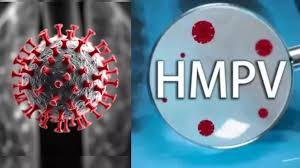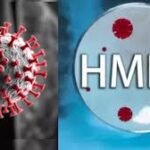We envision a world where everyone has the tools and knowledge to live a balanced, healthy, and fulfilling life. By providing reliable resources, personalized programs, and community support, we aim to be a beacon of hope for those on their health journey.
Table of Contents
Introduction to Human Metapneumovirus (HMPV)
The Human Metapneumovirus (HMPV) is a pathogen that was first identified in 2001 by a team of researchers led by Dr. J. S. van den Hoogen. This enveloped RNA virus belongs to the Paramyxoviridae family, which also includes other well-known respiratory viruses such as the respiratory syncytial virus (RSV) and parainfluenza viruses. HMPV has since emerged as a significant cause of respiratory infections, particularly in young children, the elderly, and immunocompromised individuals.
HMPV exhibits a single-stranded, negative-sense RNA genome that is approximately 13.2 kilobases in length. Its genetic structure is characterized by several open reading frames (ORFs) that encode for essential viral proteins. The envelope of HMPV harbors glycoproteins, including the fusion (F) and attachment (G) proteins, playing critical roles in the virus’s ability to infect host cells. These glycoproteins facilitate the entry of HMPV into respiratory epithelial cells, mimicking mechanisms utilized by other enveloped viruses. The similarities between HMPV and other respiratory viruses underscore the need for vigilant surveillance, as they can lead to comparable clinical presentations in infected patients.
Understanding the characteristics of HMPV is vital for the early detection and appropriate management of infections it causes. Despite being a relatively recent discovery, HMPV has gained recognition for its potential to contribute to severe respiratory diseases. Its prevalence, particularly in pediatric populations, necessitates ongoing research to explore not only its epidemiology but also potential preventative strategies and therapeutic interventions. The global health community is particularly focused on the implications of HMPV infections as they may complicate existing respiratory illnesses, highlighting a need for enhanced awareness and understanding of this virus.
Epidemiology of HMPV
The Human Metapneumovirus (HMPV) is an important respiratory pathogen recognized for its broad prevalence worldwide. This virus predominantly affects young children, the elderly, and individuals with compromised immune systems. Infection rates vary significantly across different age groups, with infants and young children experiencing the highest incidence. According to numerous epidemiological studies, HMPV infections are frequently observed in children under five years of age, who often present with symptoms ranging from mild respiratory illness to severe pneumonia.
Geographically, HMPV has been detected across multiple regions, with seasonal patterns emerging in its transmission. The virus typically exhibits a winter-spring seasonality, similar to other respiratory viruses like RSV and influenza. Studies indicate that outbreaks tend to peak during colder months, particularly in temperate climates, although tropical regions may exhibit a more consistent incidence throughout the year. Understanding these seasonal patterns is crucial for public health initiatives aimed at monitoring and controlling potential outbreaks.
Demographic factors also play a significant role in the susceptibility to HMPV infection. Socioeconomic status can affect access to healthcare, thereby influencing diagnosis rates and the overall burden of disease within populations. Furthermore, crowding and exposure to cigarette smoke are associated with higher rates of HMPV infections, particularly in children. In the context of healthcare settings, the virus can lead to nosocomial outbreaks, posing risks to vulnerable patients, such as those undergoing respiratory therapy. These epidemiological insights serve to underscore the importance of vigilant surveillance and research dedicated to mitigating the impact of HMPV on global public health.
Symptoms and Health Impacts of HMPV Infection
The Human Metapneumovirus (HMPV) infection is associated with a range of clinical manifestations that can vary in severity. The symptoms typically begin similarly to those of other respiratory viruses, including cough, fever, nasal congestion, and sore throat. In many cases, these manifestations are mild and self-limiting, allowing for at-home treatment. However, in certain populations, HMPV can lead to more severe respiratory illnesses such as bronchiolitis and pneumonia.
Infants and young children are at a heightened risk for developing severe manifestations of HMPV infection, often presenting with wheezing, difficulty breathing, and a decreased appetite. In this vulnerable group, the virus can precipitate acute respiratory distress, requiring hospitalization for monitoring and supportive care. Elderly individuals also face increased risks, as age-related decline in immune function can impede their ability to combat infections effectively. Furthermore, individuals with compromised immune systems or pre-existing respiratory conditions may experience more severe disease progression, leading to long-term respiratory complications.
The potential long-term health impacts of severe HMPV infections can be significant, particularly among children and the elderly. Research suggests that those who experience severe respiratory illnesses may develop chronic lung conditions, including asthma or other forms of obstructive lung disease. The lasting implications of HMPV on pulmonary function warrant attention, as these conditions can impose a lifetime burden on individuals’ overall health and quality of life. Therefore, understanding the symptoms associated with HMPV and recognizing at-risk populations is essential in managing and mitigating the impacts of this viral infection effectively.
Transmission and Contagion of HMPV
The Human Metapneumovirus (HMPV) is primarily transmitted through respiratory droplets when an infected individual coughs or sneezes. These droplets can travel short distances and may be inhaled by individuals in close proximity, leading to infection. Additionally, the virus can spread through direct contact, such as when a person touches a surface contaminated with HMPV and subsequently touches their mouth, nose, or eyes. The high infectivity of HM,PV raises significant public health concerns, particularly in crowded settings like schools, hospitals, and public transportation.
Viral shedding—where an infected individual releases the virus into their environment—occurs most significantly during the acute phase of the infection. Research indicates that individuals may shed the virus even prior to exhibiting symptoms, making it challenging to identify those who could potentially spread the virus. This pre-symptomatic shedding poses a risk, as individuals may unknowingly transmit HMPV to others, contributing to outbreaks.
Environmental factors play a critical role in the transmission dynamics of HM,PV. Cooler temperatures and low humidity levels, common during winter and early spring, create favorable conditions for respiratory viruses. This seasonal pattern suggests that HMPV may have increased transmission rates in certain climates, further complicating efforts to control outbreaks. Additionally, crowded environments can exacerbate the spread, as close contact among individuals facilitates both droplet and contact transmission.
In summary, understanding the transmission and contagion mechanisms of Human Metapneumovirus is essential for health professionals tasked with preventing and controlling HM,PV outbreaks. Recognizing the routes of infection and the factors that influence spread can aid in formulating effective public health strategies to mitigate this potential global threat.
Current Treatment and Prevention Strategies
The management of Human Metapneumovirus (HM,PV) infections primarily revolves around supportive care, as no specific antiviral treatment is currently approved for its use. Supportive care includes measures aimed at relieving symptoms and ensuring patient comfort. This may entail adequate hydration, fever management, and respiratory support to ensure adequate oxygenation, particularly in severe cases. Patients, especially infants and immunocompromised individuals, may require hospitalization for closer monitoring and supplemental oxygen administration.
In recent years, specific antiviral agents have been explored, though none have gained formal approval for treating HMPV infections. Agents such as ribavirin and monoclonal antibodies have demonstrated varying degrees of effectiveness in clinical studies, but more research is required to confirm their utility and optimal application. The need for novel antiviral treatments remains a priority in the quest to mitigate the impact of HMPV, particularly as the potential for outbreaks increases globally.
Preventive strategies play a critical role in controlling the spread of HM,PV infections. Current public health recommendations emphasize hygiene measures, such as frequent handwashing and surface disinfection, to reduce viral transmission. Additionally, guidelines advocate for respiratory hygiene, particularly in crowded or healthcare settings. Efforts to develop a vaccine against HM,PV are underway, with various approaches being explored, including live attenuated vaccines and inactivated virus vaccines. However, the complexity of the virus and its ability to mutate has posed substantial challenges in vaccine development.
Despite the ongoing research efforts, effective vaccination against HM,PV remains elusive. Large-scale clinical trials and stringent safety evaluations will be essential before any vaccine can receive authorization. The combined focus on supportive care, antiviral research, and preventive measures underscores the collective effort needed to combat the potential global threat posed by HM,PV.
Potential for HMPV to Become a Global Threat
The Human Metapneumovirus (HMPV) has emerged as a significant concern in virology due to several factors that could potentially facilitate its evolution into a global health threat. One of the primary concerns surrounding HM,PV is its mutation rates. Viruses are inherently adaptable, and high mutation rates can lead to the emergence of new strains that may exhibit increased virulence or resistance to existing vaccines and treatments. This adaptability could potentially allow HM,PV to circumvent current public health measures and infect individuals more effectively.
Moreover, the potential for increased transmissibility of HM,PV plays a critical role in its threat assessment. If the virus were to acquire mutations that enhance its ability to spread from person to person, it could result in outbreaks resembling those seen with influenza or coronaviruses. The respiratory transmission of HMPV, similar to other viruses, raises concerns about widespread community transmission, particularly in densely populated urban environments. The potential for asymptomatic individuals to transmit the virus further complicates monitoring and containment efforts.
Interactions between HMPV and other respiratory viruses, such as influenza or SARS-CoV-2, could exacerbate the situation. Co-infection can lead to severe respiratory illnesses, heightening the concerns associated with HM,PV. Historical precedents of viral pandemics remind us of the rapidity with which respiratory viruses can spread and cause significant morbidity and mortality. Instances such as the 2009 H1N1 pandemic and the ongoing challenges posed by COVID-19 illustrate how interaction among different viral agents can complicate global health responses and strain health systems. Considering these factors, the potential for HMPV to pose a considerable global threat warrants close monitoring and ongoing research to understand its epidemiology and mitigate risks associated with its spread.
Comparative Analysis with Other Respiratory Viruses
The Human Metapneumovirus (HMPV), while often overshadowed by more widely recognized respiratory viruses such as influenza and COVID-19, exhibits numerous critical similarities and differences that merit consideration in public health contexts. Both HMPV and influenza are part of the viral respiratory infection spectrum; however, their transmission dynamics differ markedly. HM,PV is primarily transmitted through respiratory droplets, akin to influenza, but it also has the capability to spread via contaminated surfaces, necessitating stringent hygiene practices. Conversely, COVID-19, caused by the SARS-CoV-2 virus, has demonstrated a heightened potential for airborne transmission, leading to broader and faster outbreaks globally.
In terms of symptoms, HMPV often presents with mild to moderate respiratory distress, resembling influenza and seasonal colds. Typical manifestations include cough, fever, and sore throat, notably impacting children and the elderly. COVID-19, however, encompasses a broader range of symptoms, including loss of taste and smell, which are not characteristic of HM,PV or influenza. This variation complicates the clinical diagnosis as healthcare providers must consider differential diagnoses in patients presenting with respiratory ailments.
The public health responses to these respiratory viruses also share some foundational strategies, such as vaccination, hygiene practices, and health education. Influenza vaccines are widely available and updated annually, while the COVID-19 vaccination campaign has become critical in global health management. Unlike these two, HM,PV currently lacks an established vaccine, highlighting a significant gap in preventive strategies. This necessitates a proactive approach to research and public health initiatives aimed at better understanding and controlling HMPV transmission and impact.
By examining the characteristics and management responses to HM,PV in comparison to influenza and COVID-19, public health authorities can draw essential lessons for improving strategies against respiratory viral outbreaks, ultimately enhancing global health security.
Scientific Research and Future Directions
Human metapneumovirus (HMPV) has emerged as a significant pathogen in respiratory infections, particularly among children, the elderly, and immunocompromised individuals. Ongoing scientific research is crucial for understanding the biology and pathogenesis of HM,PV. Recent studies have sought to clarify its genomic structure and elucidate the mechanisms by which it evades the host immune response. Insights gained from these investigations are vital for informing future therapeutic and preventive strategies.
A focus of current research is the development of effective vaccines against HM,PV. Several initiatives are underway to evaluate the potential of various vaccine platforms, including live attenuated, recombinant, and subunit vaccines. Researchers are also exploring the role of adjuvants that can enhance the immune response to these potential vaccines. Results from preclinical trials have shown promise, indicating that a well-designed vaccine could provide protective immunity against HMPV. Furthermore, understanding the protective correlates of immunity is paramount for vaccine design and efficacy evaluation.
Another critical area of investigation involves therapeutics aimed at mitigating the impact of HM,PV infections. Research is focusing on antiviral agents that can directly target the virus or boost the host immune system’s ability to fight the infection. Collaboration among global health organizations, academic institutions, and pharmaceutical companies is essential in this realm. By sharing data and resources, these entities can foster innovative approaches to tackle HMPV and identify effective interventions more rapidly.
Additionally, environmental factors and their role in HM,PV transmission are being studied to assess how outbreaks may be influenced by seasonality and population behaviors. Understanding these dynamics may help in the implementation of effective surveillance and response strategies. Overall, a concerted effort in scientific research will be crucial in addressing the global threat posed by HM,PV.
Conclusion: Preparing for the Future of HMPV
The Human Metapneumovirus (HMPV) has emerged as a significant respiratory pathogen, especially in children, the elderly, and immunocompromised individuals. While it has been known for some time, its ability to cause severe respiratory illness underscores the importance of ongoing vigilance in both research and public health domains. As we have discussed, HM,PV is not just another viral infection; it has the potential to become a global health threat akin to more recognized viruses such as influenza or RSV.
One of the vital aspects of preparing for the future of HM,PV is enhancing our understanding through rigorous scientific research. Current knowledge gaps regarding the virus’s epidemiology, its mechanisms of transmission, and long-term effects necessitate a concerted effort to improve surveillance systems. These systems should integrate data across different regions and demographics to enable early detection of outbreaks. Such proactive measures are crucial for timely response and prevention strategies.
Additionally, public health strategies must adapt to the evolving threat posed by HM,PV. This involves improving vaccination efforts and exploring antiviral treatments, as well as fostering international collaboration among health authorities to share data and best practices. Public awareness campaigns can also play an instrumental role in educating communities about respiratory hygiene, particularly during peak infection seasons.
Ultimately, addressing the potential impact of HM,PV requires a multifaceted approach that includes research, surveillance, and public engagement. By prioritizing these areas, we can better prepare for potential future outbreaks and mitigate the impact of this respiratory virus on global health. The time to enhance our readiness for HM,PV is now, before it escalates into a widespread public health concern.




